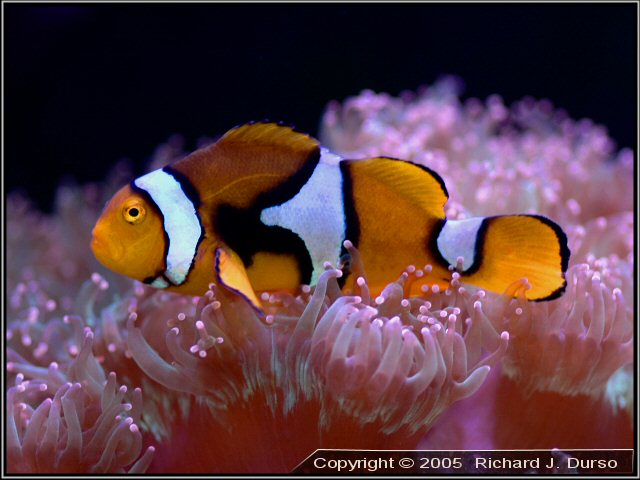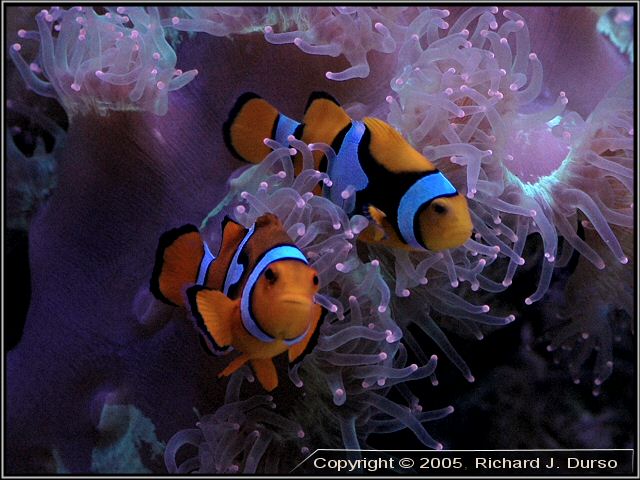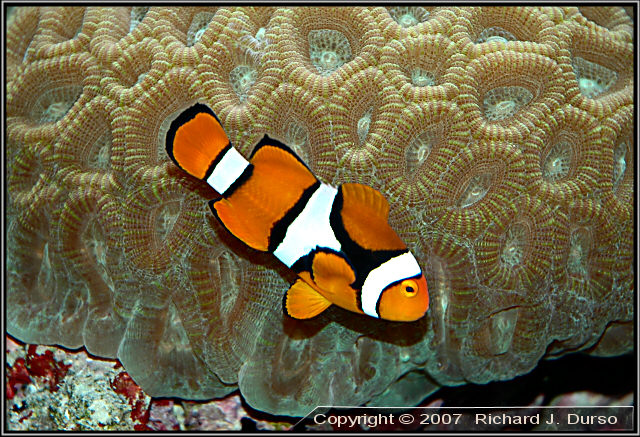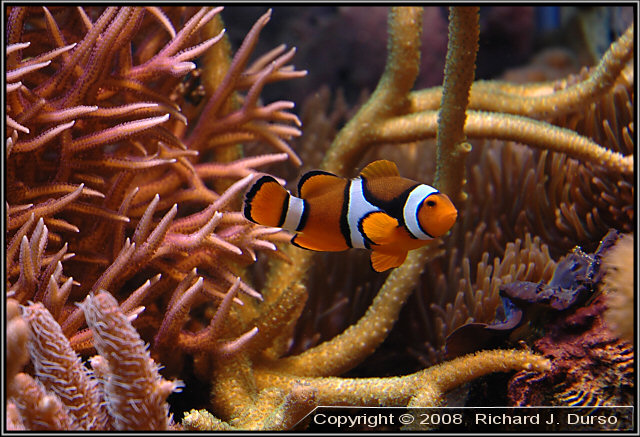
True Percula Clownfish - Amphiprion percula
Picture taken May 2005, Nikon D70 Digital SLR, Nikkor 18-70mm DX lens These clownfish have been with me longer than any other marine critter I have. They have survived four tank moves over the years. Female (larger) Purchased: April 23th, 1997. Nickname: Clownie Male (smaller) Purchased: April 26th, 1997. Nickname: Bozo Both of these fish are showing the adult coloration which is a slightly darker body. They are at full size, as pictured, which is about 3.2 inches for the female (larger one) and 2 inches for the male. All clownfish are born as subordinate males. The largest in the group will become the female and the next largest will become the dominate male. If the female should die, the dominate male will turn female and the rest fight it out to become the next dominate male. If two females are placed together they will usually fight to the death. If your going to get more than one clownfish always purchase the largest in the tank and the smallest. It may be possible that Amphiprion ocellaris and A. percula are the same species and just two different color morphs. |

Female True Percula Clownfish - Amphiprion percula
Picture taken June 2005, Nikon D70 Digital SLR, Sigma 105mm EX macro lens The clownfish no longer host in an anemone. Unfortunately the Long Tentacle Anemone they lived in did not survive in the holding tanks I had while the room construction was under way. The clownfish have since taken up residence in a Pink Tipped Elegance Coral. This is the female clownfish resting on the Pink Tipped Elegance Coral. On July 17th, 2005 this beautiful female clownfish died. |

Old (Left) and new (Right) clownfishes within minutes of introduction to each other.
Picture taken August 2005, Nikon D70 Digital SLR, Sigma 105mm EX macro lens On August 14, 2005 a new clownfish was added to replace the one pictured above which died. The new clownfish (top right) was accepted instantly with no hostilities. This image was taken the same day the clownfish was added to the tank. |

Male clownfishes, Amphiprion percula.
Picture taken April 2007, Nikon D70 Digital SLR, Nikkor 18-70mm DX lens, Flash This is the newer clownfish 20 months later, its been doing really well. I have not seen any mating rituals yet. While both clownfish tend to sleep in the Closed Brain pictured here at night when fully opened. During the day, the this male likes to stay in a green bubble anemone patch on the other side of the tank. |

Male clownfishes, Amphiprion percula.
Picture taken January 2008, Nikon D70 Digital SLR, Nikkor 18-70mm DX lens, Flash Male clownfish garding a clutch of eggs. The eggs are behind the anemones out of view. |
